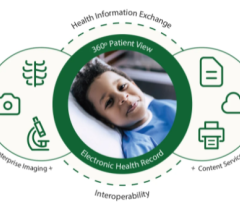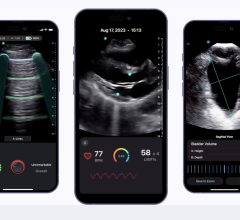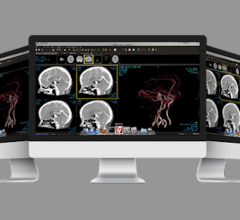May 10, 2007 — A nationally-renowned cardiothoracic surgeon at The Wisconsin Heart Hospital, Husam H. Balkhy, M.D., was the first in the U.S. to use the C-Port Flex A Anastomosis System, a fully-automated, flexible shaft device developed by Cardica Inc., to attach a blood vessel graft during coronary artery bypass surgery.
"By using the C-Port Flex A system, we were able to attach the vessel graft effectively in an area that is typically very difficult to reach. This patient is alive today because of the successful surgery to restore his blood flow," said Husam H. Balkhy M.D., Chairman of the Department of Cardiothoracic Surgery at The Wisconsin Heart Hospital, in his comments about the first case in the U.S. using the C-Port Flex A system the week before the Advanced Cardiac Techniques in Surgery (ACTS) 2007 meeting.
Dr. Balkhy and his team at The Wisconsin Heart Hospital connected the left internal mammary artery (LIMA), an ideal choice as it remains open for a significantly longer period following bypass surgery, to the left anterior descending (LAD) artery during the procedure on a 55-year-old man who was an extremely high-risk candidate for coronary bypass surgery. The patient is doing well today. His outcome was facilitated by the use of the C- Port Flex A system, in an off pump coronary bypass procedure, enabling minimal manipulation of his very weak heart.
In addition to the case at the Wisconsin Heart Hospital, Dr. Balkhy successfully performed one of six live cases in New York during the ACTS 2007 Meeting held May 3 and 4, using both the C-Port Distal Anastomosis System and the C-Port Flex A system to attach the vessel grafts during bypass surgery. During the live case that was conducted at the conference attended by approximately 400 participants, Dr. Balkhy performed a three vessel off pump coronary bypass procedure, using the C-Port Flex A system for two of the bypasses (including the LIMA) and the C-Port xA system for the third bypass. The case was transmitted live from the Lenox Hill Hospital operating room to the audience via High Definition transmission.
Coronary artery bypass surgery is performed to restore blood flow through the vessels which supply blood to the heart. The surgery is performed by taking a small part of a blood vessel from another part of the body, most often a vein from the leg or an internal mammary artery from the chest area, and surgically attaching it across an area of severe narrowing or blockage, thus bypassing the blockage. The blood is rerouted through the healthy vessel and blood flow is restored to the heart muscle.
The C-Port Flex A System, developed by Cardica, Inc., attaches the end of a bypass vessel graft to a coronary artery. This connection, called an anastomosis, is often considered the most critical step of bypass surgery. The average bypass surgery requires three grafts. The current method of performing an anastomosis takes approximately ten to 15 minutes per anastomosis and uses technically demanding, tedious and time-consuming hand- sewn sutures to connect a blood vessel to the aorta and to small diameter coronary vessels. With the C-Port Flex A's flexible shaft, surgeons can position the device to create a secure connection even in the most difficult to reach areas of the heart. The connection is complete typically in less than two minutes and requires no additional hand-sewn sutures for the anastomosis. The device received 510 clearance from the FDA in April 2007.


 June 28, 2024
June 28, 2024 








